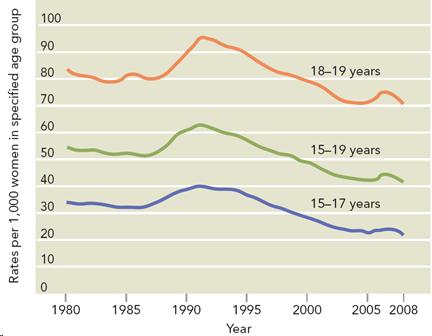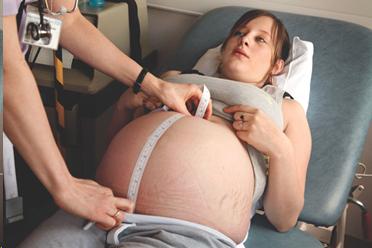
Sexuality in Adolescence <br />(Ages 12 to 19)

Birth Rates for Teenagers by Age: <br />United States, 1980-2008

11
After a steady increase between the years of 1990 to 2005, the overall teen birth rate fell in 2010 to 34.3%. This is the lowest ever reported in the seven decades for which rates are available. Still, 75,000 teens in the country will get pregnant this year. According to the The National Campaign to Prevent Teen and Unplanned Pregnancy , 81% of teenage pregnancies are unplanned and 59% result in live births.
Teen pregnancies trap most of the young mothers and fathers and their children in a downward spiral of lowered expectations, economic hardship, and poverty. Because of poor nutrition and inadequate medical care during pregnancy, babies born to teenagers have twice the normal risk of low birth weight, which is responsible for numerous physical and developmental problems. Also, many of these children will have disrupted family lives, absent fathers, and problems associated with poverty, such as poor diet, violent neighborhoods, limited health care, and limited access to education.
Teenage mothers have special needs. The most pressing that can be provided for within the community are health care and education. Improving preconception health and regular prenatal care are essential to monitor fetal growth and the mother's health. Graduation from high school is an important goal of education programs for teenage mothers because it directly influences their employability and ability to support themselves and their children.
Some teenage mothers need financial assistance, at least until they complete their education. Government programs such as food stamps, Medicaid, and the WIC or Women, Infants, and Children programs are often crucial to the survival of young mothers and their children. Even with programs such as these in place, most families need additional income to survive.
Both Images from McGraw Hill Image Library